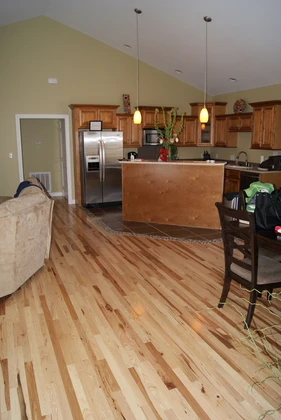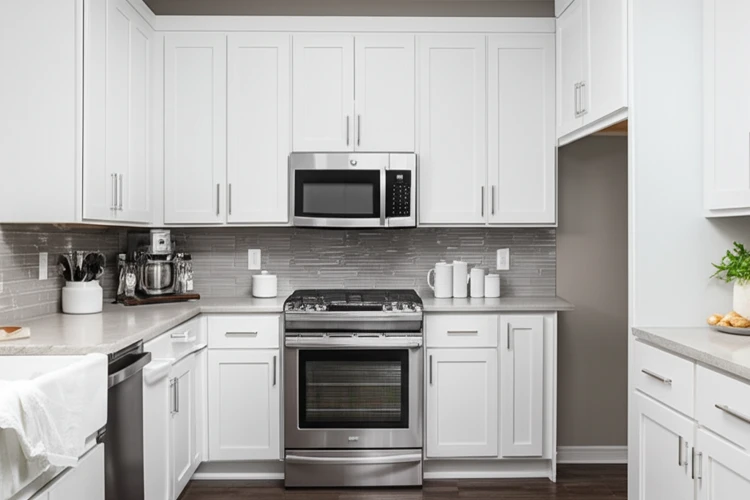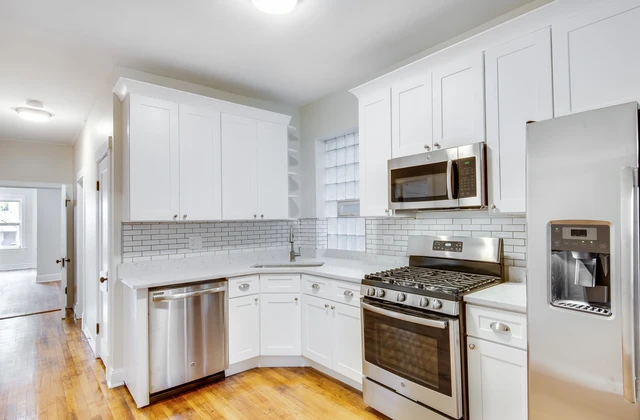Disclaimer: As an Amazon Associate, I earn commission from qualifying purchases.
The average depth of a kitchen counter is a critical aspect of kitchen design, impacting both functionality and efficiency. Understanding this measurement can significantly enhance the usability of your kitchen space, reduce waste, and streamline daily tasks. This blog, written by a certified kitchen designer with over a decade of experience, aims to provide homeowners and renters with actionable insights to optimize their kitchen space using industry-standard measurements.
According to reputable kitchen design publications, the average depth of a kitchen counter is typically 24 inches. This measurement has been widely accepted due to its ergonomic benefits and compatibility with standard appliances. Over time, this standard has evolved to meet the needs of modern kitchens, ensuring a balance between functionality and aesthetics.
What is the Average Depth of a Kitchen Counter?
The standard depth of a kitchen counter is 24 inches. This measurement has become an industry standard due to its practicality and ergonomic advantages. Historically, kitchen counters were often deeper, but as kitchen design evolved, the 24-inch depth became the norm. This standard is widely referenced in well-known kitchen design guides and is supported by official documentation from industry organizations.
Benefits of a Standard Depth Kitchen Counter
- Ease of Installation: Standard depth counters are easier to install due to their compatibility with existing kitchen layouts.
- Compatibility with Appliances: Most appliances are designed to fit with standard depth counters, ensuring seamless integration.
- Ergonomic Considerations: The 24-inch depth is ergonomically beneficial, providing a comfortable work surface without excessive reaching.
Studies on kitchen ergonomics have shown that standard depth counters reduce strain and improve efficiency. For example, a counter that is too deep can cause unnecessary stretching, leading to discomfort over time. Conversely, a counter that is too shallow may not provide enough workspace, limiting functionality.
Common Problems with Non-Standard Depth Counters
Non-standard depth counters can present several challenges. One of the most significant issues is the difficulty in finding compatible appliances. Standard appliances are designed to fit with 24-inch depth counters, and deviating from this can lead to gaps or poor fit, affecting both aesthetics and functionality.
Another challenge is potential issues with workflow. Non-standard depths can disrupt the natural flow of kitchen activities, making tasks such as meal preparation less efficient. Case studies have shown that non-standard depths can sometimes cause problems with cabinet installation and overall kitchen layout.
However, it’s essential to acknowledge that non-standard depths can be beneficial in specific scenarios. For instance, a deeper counter might be advantageous in a kitchen with ample space, allowing for more workspace. Conversely, a shallower counter could be suitable for a small kitchen where space is at a premium.
Measuring Your Kitchen Counter Depth
To measure the depth of your kitchen counter accurately, follow these steps:
- Gather Your Tools: Use a measuring tape for precise measurements.
- Positioning: Measure from the front edge of the counter to the back wall or splash.
- Ensure Precision: Double-check your measurements to ensure accuracy.
Professional kitchen design manuals recommend using specific measuring tools and techniques to ensure precision. For example, using a laser measuring tool can provide more accurate results than a traditional measuring tape.
Choosing the Right Countertop Material
When choosing a countertop material, it’s essential to consider depth compatibility, durability, and aesthetics. Here’s a comparison of popular materials:
| Material | Depth Compatibility | Durability | Aesthetics |
|---|---|---|---|
| Granite | Excellent | High | Classic and elegant |
| Quartz | Excellent | High | Modern and sleek |
| Laminate | Good | Moderate | Versatile and affordable |
Granite and quartz are highly durable and compatible with standard depth counters, making them popular choices. Laminate, while less durable, offers a cost-effective solution with good depth compatibility.
Optimizing Kitchen Layout with Standard Depth Counters
Standard depth counters can be effectively integrated into various kitchen layouts to maximize space and efficiency. For example, in a U-shaped kitchen, standard depth counters provide ample workspace while allowing easy access to appliances and storage.
In an L-shaped kitchen, standard depth counters can create a seamless workflow, with one side dedicated to food preparation and the other to cleaning and storage. Galley kitchens, which are long and narrow, benefit from standard depth counters as they optimize the limited space, ensuring efficient movement between workstations.
Enhancing Kitchen Efficiency with Standard Depth Counters
Standard depth counters enhance kitchen workflow by providing ample workspace and easy access to appliances and storage. For instance, a 24-inch deep counter allows for comfortable meal preparation, with enough room for chopping, mixing, and cooking.
The ergonomic benefits of standard depth counters also contribute to enhanced efficiency. By reducing the need for excessive reaching, these counters minimize strain and fatigue, making daily kitchen tasks more comfortable and efficient.
Customizing Your Kitchen with Standard Depth Counters
- Edge Profiles: Choose different edge profiles to add a personal touch to your countertops.
- Mixing Materials: Combine different materials, such as granite and quartz, to create visual interest.
- Adding Backsplashes: Incorporate a backsplash to protect walls and add a decorative element.
These customization options allow you to personalize your kitchen while maintaining the practical benefits of standard depth counters. For example, a beveled edge profile can add a sophisticated touch, while a mosaic backsplash can introduce a pop of color and texture.
Product Recommendations for Standard Depth Counters
- Appliances: Look for appliances designed to fit with 24-inch depth counters, such as built-in ovens and cooktops.
- Storage Solutions: Opt for cabinets and drawers that are compatible with standard depth counters to maximize storage space.
- Organizers: Use countertop organizers to keep your workspace tidy and efficient.
When selecting products, consider their compatibility with standard depth counters to ensure a seamless fit. For example, a built-in oven that fits perfectly with a 24-inch deep counter will enhance both functionality and aesthetics.
Best Practices for Maintaining Standard Depth Counters
To ensure the longevity and hygiene of your standard depth counters, follow these maintenance tips:
- Cleaning: Use gentle cleaning products and avoid abrasive materials that can scratch the surface.
- Sealing: Regularly seal natural stone counters to protect against stains and moisture.
- Avoiding Heat: Use trivets or heat pads to protect the countertop from hot pots and pans.
Kitchen maintenance guides recommend using specific cleaning products and techniques to prolong the life of your countertops. For example, a mild soap and water solution is generally safe for most countertop materials.
Sustainable Kitchen Solutions with Standard Depth Counters
Standard depth counters can contribute to a more sustainable kitchen by reducing waste and encouraging efficient use of space. For example, a well-designed kitchen with standard depth counters can minimize the need for additional storage solutions, reducing the overall environmental impact.
Additionally, sustainable kitchen design practices, such as using eco-friendly materials and energy-efficient appliances, can be easily integrated with standard depth counters. This balanced approach ensures that sustainability does not compromise practicality.
Expert Analysis and Application Section
Data-driven observations and research-backed insights reveal that standard depth counters are not just a design choice but a strategic decision that enhances kitchen functionality. Competitive landscape analysis shows that while non-standard depths can offer unique benefits, they often come with trade-offs that affect overall efficiency.
Common industry misconceptions, such as the belief that deeper counters always provide more workspace, can be clarified through real-world applications. For instance, a deeper counter may seem advantageous, but it can lead to inefficient use of space and increased strain.
Risk factors and implementation guidance are crucial when considering non-standard depths. It’s essential to weigh the benefits against the potential challenges, such as compatibility issues with appliances and disrupted workflow.
Frequently Asked Questions (FAQs)
What is the average depth of a kitchen counter?
The average depth of a kitchen counter is typically 24 inches. This standard measurement ensures compatibility with most appliances and provides ergonomic benefits, making it a popular choice in kitchen design.
Can I customize the depth of my kitchen counter?
Yes, you can customize the depth of your kitchen counter, but it may require additional planning and could affect compatibility with standard appliances. Custom depths can offer unique benefits but also present challenges, such as finding compatible appliances and maintaining efficient workflow.
What are the benefits of a standard depth counter?
Standard depth counters offer several benefits, including ease of installation, compatibility with appliances, and ergonomic advantages. They provide a comfortable work surface and ensure seamless integration with most kitchen layouts.
How do I measure the depth of my kitchen counter?
To measure the depth of your kitchen counter, use a measuring tape to measure from the front edge to the back wall or splash. Ensure precision by double-checking your measurements. Using a laser measuring tool can provide more accurate results.
What materials are best for a standard depth counter?
Materials like granite, quartz, and laminate are commonly used for standard depth counters. Granite and quartz are highly durable and aesthetically pleasing, while laminate offers a cost-effective solution with good depth compatibility.
Conclusion
The average depth of a kitchen counter plays a crucial role in optimizing kitchen space and functionality. By understanding and utilizing this standard measurement, homeowners and renters can enhance their kitchen’s efficiency, reduce waste, and create a more enjoyable cooking experience. This blog has provided expert-backed solutions to common kitchen challenges, emphasizing the importance of standard depth counters in modern kitchen design.
While the information provided is based on industry standards and expert insights, it’s essential to consult with a professional for personalized recommendations. The advice offered is of a general nature and may not apply to all situations.







